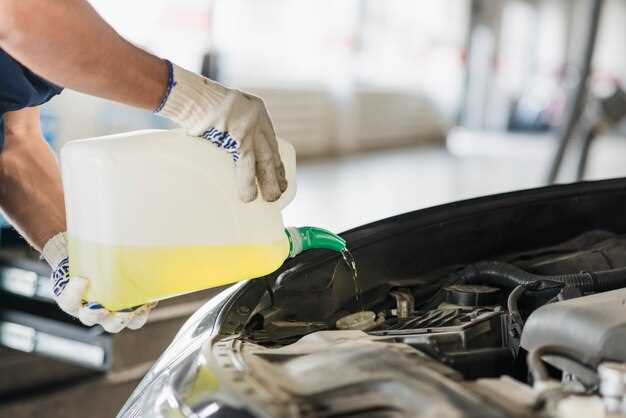
Maintaining the optimal performance of a lightweight car involves a variety of factors, chief among them being the regular change of essential fluids. Unlike heavier vehicles, lightweight cars often require more frequent fluid changes due to their unique engineering and design, which prioritize efficiency and speed. Understanding the right frequency for these changes can significantly extend the lifespan of the vehicle and enhance its performance.
Engine oil, transmission fluid, coolant, and brake fluid are the primary fluids that require attention in lightweight cars. Each fluid serves a specific purpose, contributing to the smooth operation of the vehicle’s systems. For instance, engine oil lubricates moving parts, while coolant regulates temperature, preventing overheating during high-performance driving. Regular maintenance schedules should reflect the specific needs of the lightweight car, taking into consideration driving conditions and manufacturer recommendations.
Moreover, lightweight cars often experience different wear and tear patterns compared to their heavier counterparts. The higher power-to-weight ratio generally leads to more intense operating conditions, which can accelerate fluid degradation. As a result, car owners should adopt a proactive approach to fluid changes, ensuring that they are not only adhering to manufacturer guidelines but also adapting to their individual driving habits. This article delves into the optimal fluid change intervals for lightweight cars, offering insights and best practices to enhance both performance and reliability.
Understanding Manufacturer Recommendations for Fluid Changes
Manufacturers play a crucial role in determining the frequency of fluid changes for lightweight cars. These recommendations are based on extensive research, testing, and engineering principles that ensure vehicle performance and longevity. Adhering to these guidelines is essential for maintaining optimal function and reliability.
Fluid changes pertain to several critical systems in a vehicle, including:
- Engine oil
- Transmission fluid
- Brake fluid
- Coolant
- Power steering fluid
- Differential fluid
Each type of fluid serves a specific purpose and has its own recommended change interval, often influenced by various factors:
- Driving Conditions: Frequent stop-and-go traffic, extreme temperatures, or off-road driving can accelerate fluid degradation.
- Fluid Type: Synthetic fluids may offer longer intervals between changes compared to conventional fluids.
- Vehicle Use: Cars used for towing, racing, or other heavy-duty purposes may require more frequent fluid changes.
- Mileage: Many manufacturers specify change intervals based on mileage, often ranging from 3,000 to 15,000 miles.
Understanding these factors can help vehicle owners follow the manufacturer’s guidelines more effectively. It is advisable to consult the owner’s manual for specific recommendations tailored to the vehicle’s make and model. Following these suggestions can lead to:
- Improved engine performance
- Increased fuel efficiency
- Enhanced safety features
- Longer lifespan of vehicle components
Ignoring manufacturer fluid change recommendations can lead to serious issues, such as:
- Engine wear and deterioration
- Transmission problems
- Brake failure
- Overheating
In summary, manufacturer recommendations for fluid changes are designed to optimize vehicle performance and ensure safety. Regularly consulting the owner’s manual and adhering to these guidelines helps maintain a lightweight car effectively, promoting longevity and reducing the likelihood of costly repairs.
Identifying Symptoms of Fluid Degradation in Lightweight Vehicles

Fluid degradation in lightweight vehicles can significantly affect performance, safety, and longevity. Identifying symptoms early can prevent costly repairs and maintain optimal functioning.
One of the primary indicators of fluid degradation is a change in color. For instance, engine oil that is typically amber can darken to a brown or black hue, suggesting contamination and deterioration. Similarly, transmission fluid should maintain a bright red color; if it turns brown and has a burnt smell, it indicates thermal breakdown.
Another notable symptom is the presence of unusual odors. Fresh fluids have specific smells, but degradation can result in sour or burnt odors, particularly in engine oil and coolant. If these odors are detected, it signals the need for immediate evaluation and potential replacement.
Fluid consistency also serves as a key indicator of degradation. Oil that becomes gritty or has a sludgy texture may indicate the presence of contaminants. Coolant that appears cloudy or has particles suspended in it suggests contamination and loss of effectiveness, which can lead to overheating.
Physical leaks or the appearance of residue around connections can further signify degraded fluids. Fluid leaks can occur as seals harden or as hoses break down, often leading to decreased performance or fluid levels dropping to critical points. Regular checks for wet spots under the vehicle or around fittings can help catch these issues early.
Finally, performance issues such as reduced engine power, erratic shifting, or overheating may relate to fluid degradation. These symptoms may signal that the fluids are unable to perform their intended functions, such as lubrication, cooling, or hydraulic support. Regular monitoring of these symptoms can help ensure timely maintenance and fluid replacement.
DIY Fluid Change: Tools and Techniques for Lightweight Car Owners

Performing a fluid change on your lightweight car can significantly enhance its performance and longevity. The right tools and techniques not only simplify the process but also ensure that you perform the task safely and effectively.
Essential Tools:
- Wrenches and Sockets: A set of metric wrenches and sockets is crucial for loosening and tightening drain plugs and components.
- Fluid Extractor: For easier transmission or brake fluid changes, a fluid extractor can save time and reduce spills.
- Oil Drain Pan: This receptacle collects used oil and fluids, preventing environmental contamination.
- Funnel: A funnel helps pour new fluids neatly without spills.
- Jack and Jack Stands: Lifting your lightweight car safely is essential for accessing undercarriage components.
- Gloves and Rags: Protect your hands and keep your workspace clean by using gloves and absorbent rags.
Techniques for Successful Fluid Change:
- Consult Owner’s Manual: Always refer to your car’s manual for specific fluid types and change intervals suited for your model.
- Warm Up the Engine: Warming the engine slightly can help fluids drain more easily, allowing for thorough removal of old fluid.
- Drain Old Fluid Completely: Allow adequate time for the old fluid to drain from the system to ensure no contaminants remain.
- Replace Filters: When changing fluids like oil, replace filters to maintain fluid cleanliness and optimal performance.
- Check for Leaks: After filling in new fluids, always inspect the system for leaks to prevent future issues.
Maintenance Tips:
Regularly monitoring fluid levels can prevent problems before they escalate. Make fluid changes part of your routine maintenance schedule, tailored to your driving habits and conditions. Being proactive with these practices ensures your lightweight car runs smoothly and efficiently.













